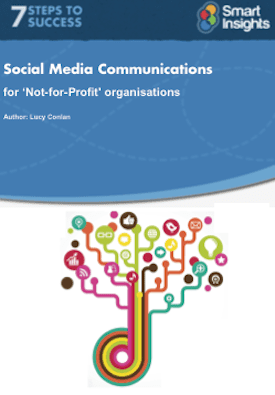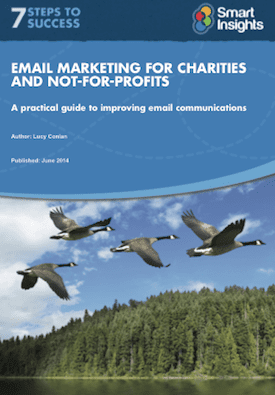Ensure your email isn't unloved, underestimated or untapped
I feel that often, charities are missing a trick or two with email. Due to its ubiquity and apparent cheapness, it is often not given the credit it is due. There are clear merits for charities using email, it is cost effective, it can be well-targeted and can enhance both real life and online experiences.
Barriers for lack of email marketing with charities
Looking at this in more detail, what are the barriers to success for charities running successful email programmes? Some of the reasons for this are:
- Email is not perceived as a valuable asset, particularly at senior level, so it is not given the staff and budget required to work successfully.
- Lack of joined-up thinking – often the email programme is run by the communications team but the valuable understanding of the audiences is not well understood (as this knowledge lies usually with the services and fundraising departments).
- Inadequate analysis – often reporting only shows campaign information and not the wider impact of email communications e.g. in boosting retention levels of regular givers.
Email marketing techniques for Charities
Having personally donated to various charities online and signed up to many email communications, it seems to me that there is a wide variance in how NFPs run email campaigns. However, most fail to capitalise on one or more of the following areas:

Recommended guide: Social media for Not-for-Profit organisations.
This guide gives recommendations on best practices for charities and other not-for-profit organisations to use social networks to meet their objectives.
Download our Guide to social media communications for charities.
- Technique 3. Tailoring content – how often do we feel that the email content is tailored to what the charity knows about us? I bought a gift membership online from one well-known charity. They send me lovely newsletters each month, but they have NEVER referred to my gift membership in these email communications. They did, however, send me a direct mail about it in the first year, more costly for them to do and less likely to illicit a repeat order for me than an easy option to renew online when prompted via email. The functionality is there with any good email system through the use of conditional content to provide relevant, engaging email communications.
- Technique 4. Follow unfinished online donations – This practice of ‘re-marketing’ is more commonly used by e-commerce based organisations that use email to boost online income to counter ‘cart abandonment’. However, having tested a number of well-known charity websites, none of them followed up my incomplete donation with an email. You can expect to convert about 10% of those targeted – over time that could be a valuable source of income for your charity.
- Technique 5. Fine-tune approaches with costly media – by using email to test ahead of expensive activity such as print and telemarketing, charity funds can be used much more effectively.
I have seen the benefit of using the results from subject line testing with email to inform the approach of a direct mail pack, which generated in turn above average results for the charity using this.
- Technique 6. Use email clues to inform audience understanding and improve targeting – while many charities will have very sophisticated donor segmentation models, it is still rare for the results from email campaigns to be used to inform this. By including open and click through rates to help inform how engaged audiences are and to predict their media preferences could really enhance campaign performance through better informed targeting.
In short, email could be a much more powerful and well-respected asset to charities. It needs be better understood and loved. To kick-start this process, start simply:
- Define what part email could play to achieve your charitable aims
- Evaluate past performance so as to set goals for enhanced performance
There are some charities that are already setting the bar high – in the guide you will see stunning examples from Save the Children, Greenpeace International and Dogs Trust. Use this inspiration to boost your own charity’s email communications so that from directorate to your target audiences, email is a truly appreciated media.

Recommended Guide: Email marketing for charities
Packed full of examples and tips showing how to increase response from email marketing campaigns and newsletters.
Download our Charity Email marketing guide








